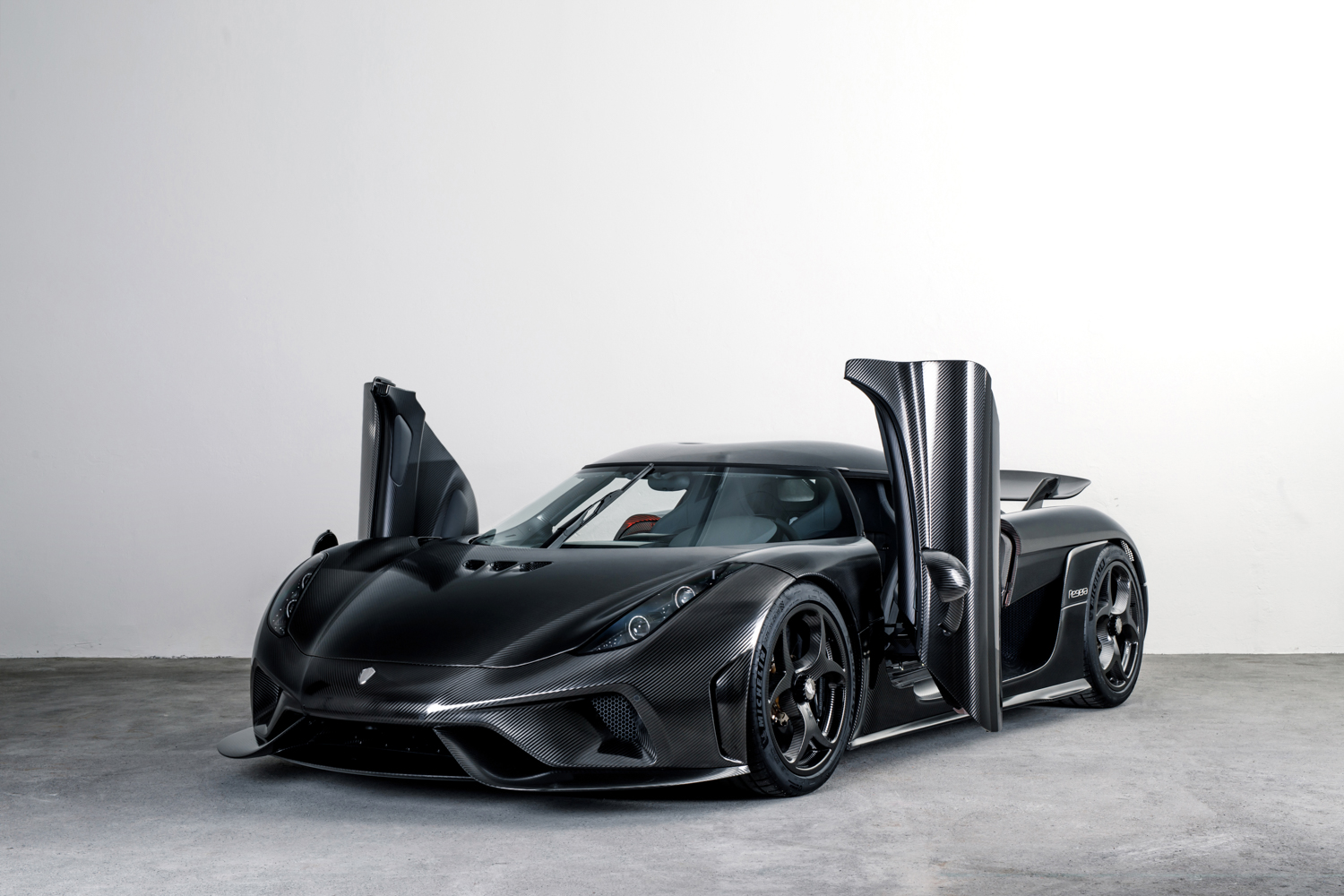Koenigsegg has produced the world’s first ever car finished completely in Koenigsegg Naked Carbon – KNC.
KNC involves no lacquer, varnish or alternative coating being used on top of the carbon surface. The thin layer of epoxy that normally covers a high-end autoclaved cured carbon piece is carefully removed by hand polishing. This is an extremely sensitive process; one stroke too many will ruin the visible weave structure underneath the thin epoxy layer.
The end result is a striking new look for carbon fiber. The body of the car becomes cold to the touch as the material is pure carbon, instead of an insulating epoxy or lacquer layer with carbon underneath. The sheen takes on a more metallic graphite appearance as each graphite strand is now fully exposed.
All images by Keno Zache Photography.

Koenigsegg has been perfecting the KNC method over several years, applying it to parts such as wheels, wings, splitters, winglets and steering wheels, with great effect.
Before deciding to do a whole car, samples were exposed to summer heat and sun, as well as winter wet and cold. Parts were kept outside for several years in order to make sure the elements did not negatively affect the amazing surface.

Carbonfibre parts are finished in one of three different ways at Koenigsegg:
– Exterior panels are sanded and then painted with a colour, a clear coat or a combination of the two.
– Some under-hood carbonfibre parts have their epoxy layer polished, giving an effect similar to clear-coat paint.
– Most under-hood and interior parts have their epoxy layer removed and are then polished to a raw carbon state; a very delicate process involving both sanding and polishing. The margin for error is extremely fine and can result in either a perfect, high-lustre finish or ruined threads of exposed carbonfibre.
This final process is the one used – for the very first time – for the exterior of this KNC Regera.

One interesting upside to KNC is that lacquers are much softer than the exposed carbon. The KNC surface is actually much less sensitive to stone chips and sharp objects causing scratches compared to conventional surface treatments.
The KNC process requires an absolutely perfect production tool producing perfects parts. Imperfect surfaces cannot be smoothed out, adjusted or compensated for on the final body panel. Every panel must, therefore, be perfect before being considered for use on a KNC car.
That the KNC process is even possible is a true testament to the extreme tolerances and quality control inherent in the Koenigsegg production process.
Christian von Koenigsegg, CEO:
“It’s not unusual for a customer to specify their car with visible carbonfibre. It’s a beautiful material from a visual perspective and our customers love to show what the car is made from. KNC takes the idea of visible carbonfibre to a whole new level, revealing a beautiful lustre and a very silky finish.
The Koenigsegg philosophy has always been about exploring extremes. It’s great to extend that idea to a whole new way of finishing and presenting a car.”

As there is no paint or clear lacquer at all on the car and the thin layer of epoxy is polished away, the KNC Regera is actually around 20 kg lighter than a painted Koenigsegg.
The resulting finish is subtle but distinctive. Instead of reflecting the shape of a panel covered in clearcoat, the light plays off each strand of carbonfibre. It’s familiar and yet unlike any Koenigsegg that has come before, and it is a unique method developed by Koenigsegg as a world’s first.
The KNC Regera, recently delivered to its owner in Switzerland, is the first Koenigsegg ever made using this extreme and exciting solution.
